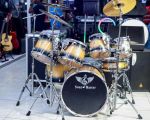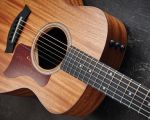Understanding "A Musical Instrument" Poem: An In-depth Analysis
The poem "A Musical Instrument" by the famous poet, Edna St. Vincent Millay, presents a vivid and evocative image of a musician who seeks to create music that touches the soul. This piece invites readers to reflect on the role of the artist, the intersection of creation and destruction, and the relationship between beauty and pain. But how does this relate to the power of a musical instrument itself? How does the poem use the instrument as a symbol for artistic endeavor, struggle, and revelation? Let’s delve deeper into the meaning and analysis of this lyrical work.
1. The Role of the Musical Instrument in the Poem
At first glance, the musical instrument in Millay's poem seems to serve as a literal object. However, as we explore further, it becomes evident that the instrument is symbolic. Millay presents it as both a vehicle for creativity and a conduit for the expression of human emotion. The instrument is crafted by the hands of the artist, who experiences both pain and passion in the process of its creation.
The choice of a musical instrument is significant. Instruments are not just tools; they are extensions of the artist's body and soul. Just as a sculptor chisels away at stone, the musician shapes the air, making music from sound. The instrument becomes a bridge between the artist’s internal world and the external world, translating thoughts, desires, and emotions into a tangible form.
2. Creation and Destruction: The Dual Nature of Art
The central theme in the poem is the paradox of creation and destruction. The poet describes the making of a musical instrument as a process of destruction. As the artist works, there is a sense of sacrifice—something must be destroyed for something new to emerge. The carving of the wood, the shaping of the instrument, are acts of both creation and destruction. Millay writes, “He took the twig of a tree that once had known the sun,” symbolizing that the very act of creation involves loss. The tree, once full of life, is transformed into an instrument, a product of labor but also a symbol of what was sacrificed.
This dual nature of art—where creation requires a certain degree of destruction—resonates with anyone involved in artistic processes. Writers, painters, musicians, and other artists often experience this push and pull, where their creations emerge only through intense emotional labor. Yet, in their final form, the works can evoke beauty, love, sorrow, and even pain, reflecting the complexity of the human experience.
3. Symbolism of Music and the Instrument
Music in the poem is more than just a series of notes or melodies. It symbolizes the ineffable, the emotional undercurrent of the human experience. Millay’s depiction of the instrument also represents the creative force of the universe itself. The poem suggests that music can connect humans to something larger, offering both a form of release and a method of understanding one’s place in the world.
But music also bears the weight of emotional intensity. The poet writes, “To make the music and the soul in the wound.” Here, the musician’s creation of music is intertwined with their suffering and their triumph. The poem suggests that music is born from pain, from the emotional tension between love and sorrow, life and loss. The wound represents not just physical injury, but the emotional scars that everyone carries. In this sense, the musical instrument becomes an extension of both the artist's vulnerability and their strength.
4. The Power of Art to Evoke and Heal
One of the most compelling aspects of Millay's poem is the way in which it conveys art’s healing power. While the creation of the instrument involves destruction, the music that flows from it has the power to heal. Music is an emotional release and, in many ways, an act of redemption. Millay emphasizes that through the artist’s labor, the listener or viewer is able to experience the world from a new perspective. Music can transform pain into beauty, and beauty into solace.
This concept of art’s transformative power is central to how we understand not just musical instruments but all forms of creative expression. Art has a cathartic effect, offering both the creator and the audience a way to navigate the complex emotional terrain of life.
5. The Human Experience: Art, Sacrifice, and Transformation
As the poem delves deeper into the soul of the artist and the creation of the instrument, it forces us to confront the universal truths of human experience. Sacrifice, transformation, and emotional vulnerability are part of the human condition. Whether we are artists or not, each of us faces moments where we must give up parts of ourselves in the process of becoming who we are meant to be.
For anyone interested in the arts or the transformative power of creativity, this poem offers both insight and inspiration. Whether you’re a musician, painter, or writer, you may find yourself reflecting on your own process of creation and the sacrifices involved. Art, like life, is a process that blends beauty and pain in equal measure.
6. Connecting the Poem to the World of Music and Instrumental Art
The relationship between art and music transcends the words of Millay’s poem. For those interested in the world of music, this poem resonates deeply, particularly for musicians who live the dual reality of creation and destruction every time they compose or perform. It is in this creative space that we find the deepest connections between the soul and the instrument. The music, once born, lives on, reverberating long after the artist’s hands have left the instrument.
If you are a lover of music or an artist yourself, you may also be intrigued by the role of perfume in the creative process. Just as a musical instrument carries the emotional resonance of the musician’s soul, a fragrance can capture an emotion or memory. Imagine pairing a perfume that matches the mood of the music you play—an evocative, soothing fragrance to accompany your creative sessions. Exploring perfumes and fragrances that connect with your emotions, like the subtle, evocative nature of a musical instrument, can elevate your artistic journey.








